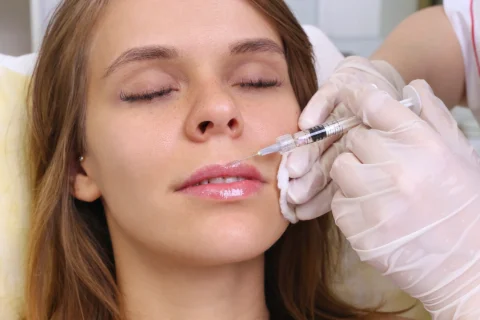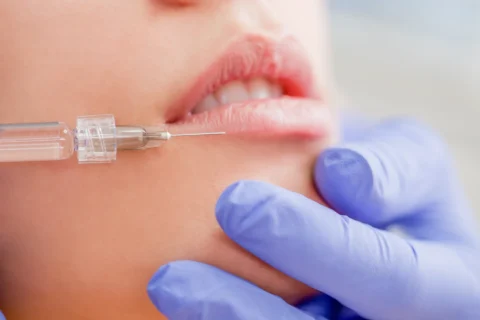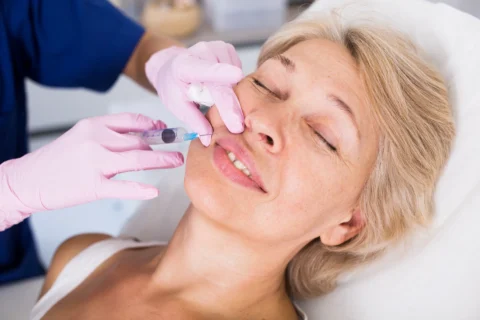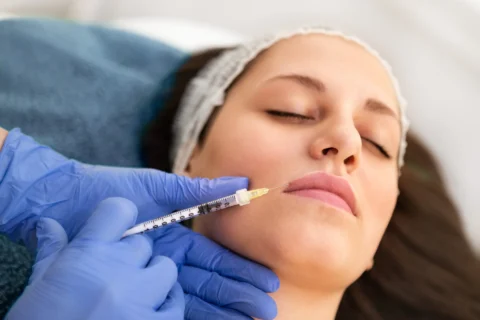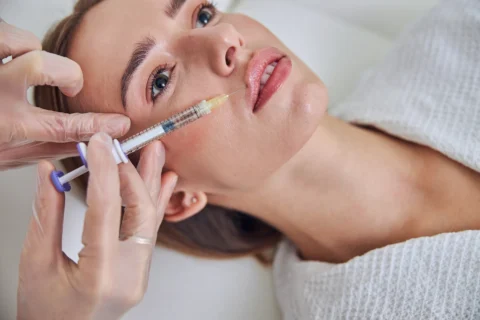Understanding Lip Fillers: What They Are and How They Work
Think about lip fillers, and most likely you imagine a magic wand that can plump your lips up to perfection.
Lip fillers, or dermal fillers, are special injections that can add volume to your lips. They’re a quick and efficient way to get fuller lips without the fuss of invasive surgery.
People get lip fillers for a variety of reasons. Maybe they want that alluring, full-lipped look. Or perhaps they want to restore the fullness that time has taken away.
Lip fillers can do more than just enhance volume—they can also fine-tune the shape of your lips, correct asymmetry, and hydrate your lips to smooth out tiny cracks.
There are various types of lip fillers available, each with its own unique characteristics and benefits.
Some of the popular ones include hyaluronic acid fillers, which are known for consistent results and a great safety record, and collagen fillers, which are less popular due to occasional allergic reactions.
Now, how about the techniques used for these lip fillers? Well, let’s delve into that.
Unveiling Lip Fillers: Your Pathway to Plump Lips
When we talk about lip fillers, what exactly are we referring to?
Simply put, lip fillers, also known as dermal fillers, are injections designed to enhance your lips by adding volume.
These non-invasive treatments are a temporary yet impactful way to revitalize or boost the fullness of your lips.
Renowned for their safety, negligible downtime, and few side effects, lip fillers have become the go-to option for many looking to refresh their look.
So Why Are People Flocking To Get Them?
The reasons are manifold. For some, it’s about achieving that coveted fuller, plumper lip look. Others might be seeking to reclaim the volume that time has subtly whisked away.
Lip fillers offer benefits that stretch beyond the visually appealing plumpness.
They can refine the contour of your lips, balance any asymmetry, and provide a hydration hit to smooth out minor cracks.
When it comes to lip fillers, there are multiple types available, each possessing its own unique traits and benefits:
- Hyaluronic Acid Fillers: Sitting at the top of the popularity chart, these fillers are celebrated for their consistent results and outstanding safety record. The secret lies in their ability to draw in water, creating volume in the targeted areas for that sought-after fuller appearance.
- Collagen Fillers: While once the dermal filler du jour, collagen has somewhat fallen out of favor. Its throne has been seized by alternatives like hyaluronic acid fillers, which are safer and have longer-lasting effects. Collagen fillers are also known to occasionally induce allergic reactions and are typically not recommended for lips.
- Fat Injections: This technique, although less frequently used these days, involves using fat injections or implants to plump the lips. Despite its natural appeal, the results can be unpredictable, and it carries a higher risk of side effects.
Lip fillers are a well-loved choice in cosmetic enhancement, specifically for those seeking to uplift their lip appearance.
They are generally safe and effective, but it’s crucial to familiarize yourself with the different types and potential risks before embarking on your lip-enhancement journey.
A Deep Dive into Lip Filler Techniques

Navigating the world of lip fillers can feel like unraveling a complex tapestry of choices. To make things simpler, let’s explore the most commonly used techniques in lip filler treatment:
1. Linear Threading Technique (Linear Injections)
This popular method involves injecting the filler in a linear pattern, much like threading a needle.
Often combined with techniques like the Russian technique, it accentuates the height and shape of the lips.
The injectable fillers are inserted in tiny straight lines, giving the lips an uplifted look.
2. Pillar Technique (Lip Tenting Technique)
Also known as the Lip Tenting Technique, the Pillar Technique involves nearly vertical injections from the white roll (the vermillion border) of the lip.
Unlike other techniques that involve parallel injections to the lip contour, this approach provides greater control over both the volume of filler used and the resultant shape of the lip.
The essence of this lip filler injection technique is to rotate the lip upwards and outwards more efficiently than other lip augmentation injection techniques.
By placing the filler in the superficial part of the lip, an upward force is created, rotating the lip outward as the needle is withdrawn.
While this technique is popular, it has generated debate due to the potential trauma it could inflict on the superior and inferior labial arteries.
3. Russian Lip Fillers
The Russian Lip Technique employs a distinctive approach, injecting the HA product vertically at the base of the lip and applying dermal filler injections.
This ‘inside out’ method of injection, as opposed to working from the lip border inwards, delivers results that are natural yet impressive.
4. Microdroplet Technique
Ideal for those looking to minimize the risk of bruising or vascular injury, the Microdroplet Technique is used in conjunction with blunt-tip cannulas.
In this technique, 100-300 microdroplets of filler are injected to enhance the lip borders/edges, rejuvenate the philtrum (Cupid’s Bow), and fill every crease within the lip that could cause lipstick bleed.
The resulting look is natural and enhances the overall features of the lips.
Each of these techniques brings something unique to the table. Understanding what each offers can help you decide which might be the right fit for your aesthetic goals.
Tips for Choosing the Right Lip Filler Technique
Choosing the right lip filler technique isn’t a one-size-fits-all process. It requires a delicate balancing act of several factors, which ultimately aim to achieve the patient’s aesthetic goals without compromising their safety. Here are some factors to consider:
Understand the Desired Outcome
The starting point in selecting the right technique is understanding the end goal. Medical professionals should establish a clear vision of the aesthetic result they’re aiming for prior to the injection process.
This understanding guides the selection of techniques, ensuring they contribute effectively towards achieving the desired results.
Balance Aesthetics and Safety
Here’s the deal: getting that perfect pout should never compromise your safety. It’s like walking on a tightrope, you have to balance getting the look you want and staying safe.
Over-emphasizing aesthetics might obscure potential risks. Conversely, overly cautious approaches that focus primarily on risk avoidance could compromise the aesthetic outcome. Striking the right balance is essential.
Select the Right Filler
The type of filler used significantly influences the choice of technique. Various types of filler products exist in the market, each suited to different aesthetic goals, lip shapes, and desired end results.
Hyaluronic acid-based fillers are frequently used for soft-tissue areas like the lips due to their natural feel, smooth look, and reversibility, which comes in handy during emergencies or in the event of undesired outcomes.
Trust Your Doctor’s Skills
The way your doctor uses the filler (aka their technique) plays a big role in how your lips will look and feel afterwards.
It’s a bit like art – every doctor has their own style and technique. They also need to think about your whole face, not just your lips, to make sure everything looks balanced and natural.
By carefully considering these factors, providers can strike the optimal balance between achieving aesthetically pleasing results and ensuring patient safety.
A Final Word: The Art of Lip Filler Techniques
Each method, whether it’s Linear Threading, Pillar, Russian, or Microdroplet offers unique benefits, promising to accentuate your natural beauty in different ways.
However, the key to an enhanced, natural-looking pout lies in the art of making informed decisions. It’s crucial to understand your aesthetic goals, the existing volume, and shape of your lips, and trust the skills of your doctor.
With wise choices and a careful approach, your journey through the world of lip fillers can lead you to the ultimate destination: fuller, beautifully shaped lips that truly reflect you.
Choose Ethos Spa for Your Lip Filler Needs
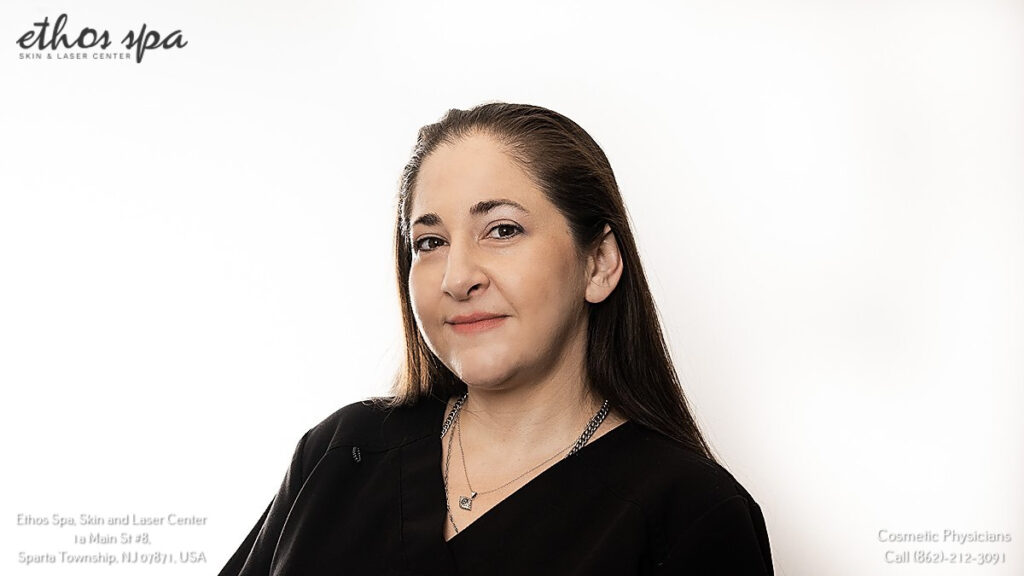
Dreaming of a beautifully enhanced pout? Make it a reality with Ethos Spa.
We understand that every client is unique, and so we take the time to understand your aesthetic goals, tailoring a lip augmentation technique that aligns perfectly with your desires.
Dive into a world where stunning beauty meets safety. With our range of lip filler techniques, you can trust that we are equipped to deliver results that are not only beautiful but tailored just for you.
Take the leap today and contact Ethos Spa. Start your journey to a confidently radiant smile with the expert care and commitment you deserve.


